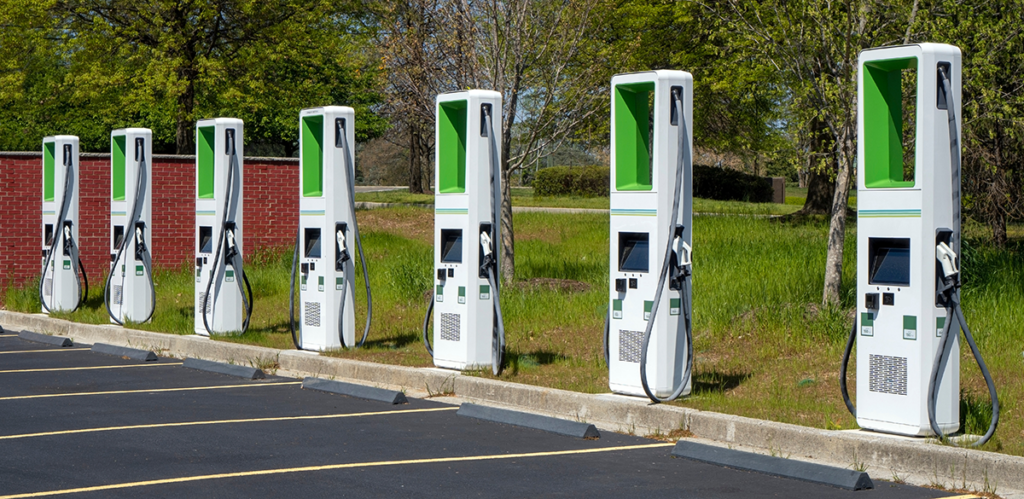
The Trump administration has recently taken significant steps affecting the development of electric vehicle (EV) charging infrastructure. It may be another step towards the dismantling of the $1.2 trillion bipartisan infrastructure bill passed under the previous administration.
The National Electric Vehicle Infrastructure (NEVI) program was a $5 billion initiative established under the previous administration to expand EV charging networks across the United States. States have been directed to pause new spending under this program until updated guidance is issued. Reimbursements for existing projects are supposed to continue, but the confusion resulting from the suspension has left many states in fear of not receiving funding from the federal government, reports the New York Times.
Potential Impacts
- Project Delays: The suspension may delay the deployment of planned EV charging stations, making the “range anxiety” already felt by EV owners even more pronounced.
- Industry Response: Automakers and EV charging companies have urged the U.S. Department of Transportation to promptly resume the program to minimize uncertainty and continue progress toward national electrification goals.
- Legal Considerations: Legal experts question the administration’s authority to suspend a program already funded by Congress, suggesting that eliminating the remaining funds may require new legislation.
These developments introduce uncertainty into the EV market, creating a negative impact on the pace of EV adoption.
The Federal Highway Administration (FHWA) has instructed all states to pause new spending under the National Electric Vehicle Infrastructure (NEVI) program until updated guidance is issued. This directive has prompted several states, including Alabama, Oklahoma, Missouri, Rhode Island, Ohio, and Nebraska, to halt their NEVI programs.
In Washington State, Barbara LaBoe, deputy communications director for the Washington State Department of Transportation, indicated that the state does not have outstanding invoices with the federal government and will refrain from future spending decisions related to project awards or grants until more details are available.
What About the Tax Credit?
The Trump administration is actively working to eliminate the federal tax credit of up to $7,500 for electric vehicle (EV) purchases. An executive order has been signed to remove what is referred to as the “electric vehicle mandate,” which includes revoking federal tax credits for EV buyers. However, implementing this change requires congressional approval, and the timeline for its potential enactment is currently uncertain, with some analysts predicting that the tax credit will not be terminated until January 1, 2026.
Support for the end of the EV tax credit comes from an unlikely source: Elon Musk. Musk’s company, Tesla, is by far the biggest beneficiary of the government’s EV tax credit, which has led to the purchase of Tesla vehicles over foreign-made EVs, which are denied the tax credit.
Nevertheless, Musk has consistently supported the elimination of the federal $7,500 EV tax credit. In a July 2024 earnings call, Musk stated that removing the tax credit would be “devastating for our competitors and Tesla slightly,” implying that Tesla’s established market position and profitability would allow it to survive better the lack of subsidy the storm than its competitors. Musk reiterated this stance during a December 2024 visit to Capitol Hill, where he advocated for the removal of all government subsidies, including those for electric vehicles.
Other Infrastructure Changes
The EV infrastructure is not the only infrastructure impacted by President Donald Trump’s recent policy announcements. There will be a significant impact on the construction industry, mainly because of tariffs, labor availability and infrastructure investment.
President Trump promised to protect the fossil fuel energy industry during his campaign, so it should come as no surprise that in the first month of his second term, he signed an executive order titled “Unleash American Energy,” which mandates an immediate pause on federal disbursements from the Inflation Reduction Act and the Bipartisan Infrastructure Law. This action affects over $300 billion allocated for green infrastructure projects, including nearly $50 billion in Department of Energy loans that had already been agreed upon and an additional $280 billion in loan requests under review. The suspension impacts a wide range of initiatives, such as renewable energy developments, electric vehicle manufacturing, and transmission projects. Industry stakeholders express concern that this move could significantly hinder the advancement of clean energy infrastructure in the United States.
Tariffs and Material Costs
Earlier this month, the administration imposed a 25% tariff on imports from Canada and Mexico and a 10% tariff on Chinese goods. While some tariffs have been delayed, their eventual enactment seems inevitable. The cost of essential construction materials like steel, lumber, and cement will be impacted, leading to increased costs for builders.
Labor Availability
The administration’s intensified immigration enforcement, including mass deportations, threatens to exacerbate existing labor shortages in the construction sector, which relies heavily on immigrant workers. This reduction in the workforce could lead to project delays and increased labor costs.
Infrastructure Investment
The administration has proposed significant infrastructure initiatives, such as the “Stargate” project—a $500 billion investment in artificial intelligence infrastructure, with $100 billion allocated for data center construction.
Agenda 47, a far-reaching agenda by President Trump (named for the 47th term), includes building up to 10 new cities on undeveloped federal land as well.
Both projects could generate substantial opportunities for the construction sector.
A Relaxed Regulatory Environment
Efforts to streamline regulations, including potential revisions to the National Environmental Policy Act (NEPA) to expedite permitting processes, may reduce compliance costs and accelerate project timelines, benefiting construction firms.
Housing Market Impact
The combination of increased material costs due to tariffs and labor shortages from stricter immigration policies could elevate construction expenses, potentially leading to higher housing prices and affecting affordability. Homebuilder stocks have declined due to concerns over rising material expenses, with companies like Lennar estimating an increase of up to $7,000 per home.
In summary, while the administration’s infrastructure initiatives may offer new opportunities for the construction industry, challenges related to tariffs and labor availability could offset these benefits, impacting project feasibility and housing affordability.

